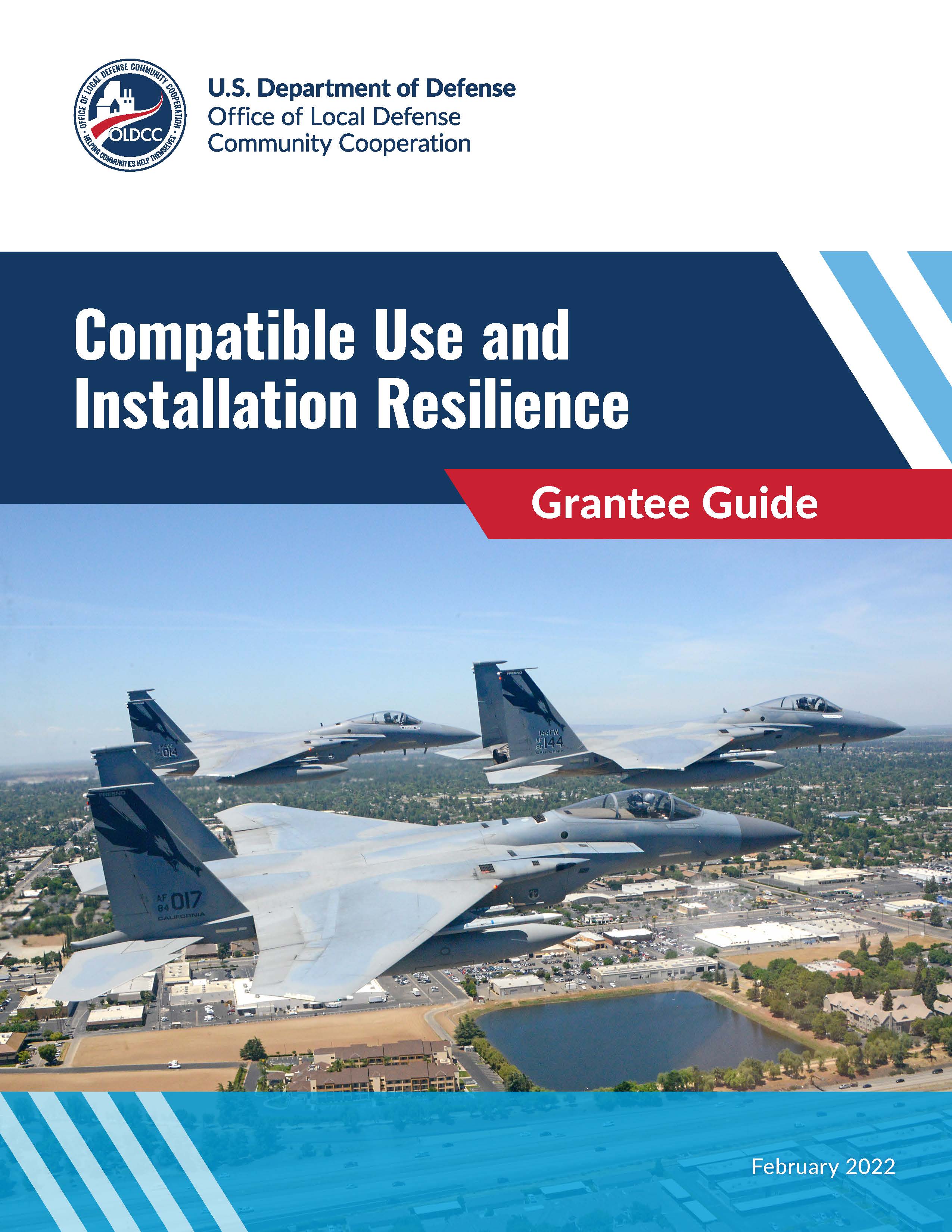Compatible use planning plays a critical role in protecting both a community
and the military. This community-led planning effort also presents an opportunity
to strengthen a jurisdiction's or a region's partnership with a military installation.
It further helps identify and address issues impacting both the military and
adjacent communities, establishes a blueprint for mutually beneficial actions
that protect public health, safety, and general welfare, while also serving
to protect and sustain the military installation's mission, increase the value
of an installation to the DoD and community, and support continued community
growth and economic development.
Robust public outreach and military stakeholder involvement during the community
planning process serves to increase public awareness of military operations,
including the significant economic contribution to the local and regional economy,
and ensures a smooth transition for local, regional, and state stakeholders
to implement planning recommendations. Strong military/community partnerships
during the planning process plays a critical role in preserving military operations,
protecting the public health, safety and general welfare of residents and businesses,
and maintaining economic stability and continued community growth.
Compatible Use Study
A Compatible Use Study, which the DoD formerly referred to as a Joint Land
Use Study (JLUS) and are often funded by the DoD's
Office of Local Defense Community Cooperation (OLDCC), represents a community-driven,
cooperative, and strategic planning process to protect and preserve military
readiness and defense capabilities, while supporting continued community growth
and economic development. A Compatible Use Study includes strategies and actions
to:
- Promote community development that supports and is compatible with military
training, testing, and operational missions;
- Seek ways to reduce negative impacts of the installation activities
on an adjacent community;
- Increase public awareness of the military mission and contribution to
the regional economy; and
- Protect and preserve military readiness and defense capabilities, while
supporting symbiotic community economic stability and success.
Military Installation Resilience Review
A Military Installation Resilience Review (MIRR), for which grant funding
is available from OLDCC to develop, is a program designed to help communities
partner with local installations to make informed decisions that respond to,
address, and mitigate activities that are, or could be impairing the use of
a military installation. A MIRR focuses on infrastructure and vulnerabilities
related to the most likely hazards to occur in and around a military installation,
and ultimately leads to a set of recommendations that broaden the resilience
and adaptation capacity of an installation and community. Hazards include sea
level rise, extreme weather events, and other changes in environmental conditions.
These hazards may potentially impact both installations and neighboring communities.
Therefore, the MIRR program, like a Compatible Use Study, is completed jointly
by the installation and adjacent jurisdictions. A MIRR follows the same development
process as a Compatible Use Study. For more information on the MIRR, see Local
Governments and Military Installation Resilience.
Compatible Use and Installation Resilience:
Grantee Guide

OLDCC's Compatible Use and Installation Resilience Grantee Guide includes
a general framework for a state, regional planning organization, or local government,
to undertake a Compatible Use Study or Military Installation Resilience Review
project. The guide serves to improve a grantee's grant execution and implementation
efforts and includes best practices and a series of past project examples that
illustrate successful community efforts.
The guide lays out a framework for both project types in three phases - Organize,
Plan, and Implement, during which continued communication and coordination between
the community and military installation is encouraged. In addition to laying
out the framework, the guide includes detailed support for the following:
- The Application Process, which includes information on nomination options,
eligibility and selection criteria, and activities that should take place
by different entities before an application is submitted. This section also
walks the user through the application process and what to expect, post
award.
- Conducting the Study or Review, which includes detailed guidance on
developing a scope of work, project committees, suggestions for public participation,
and examples of data collection and analyses activities; and
- Implementation, which addresses the importance of implementing study
recommendations and provides an array of case studies, tools, and strategies
for consideration by jurisdictions.